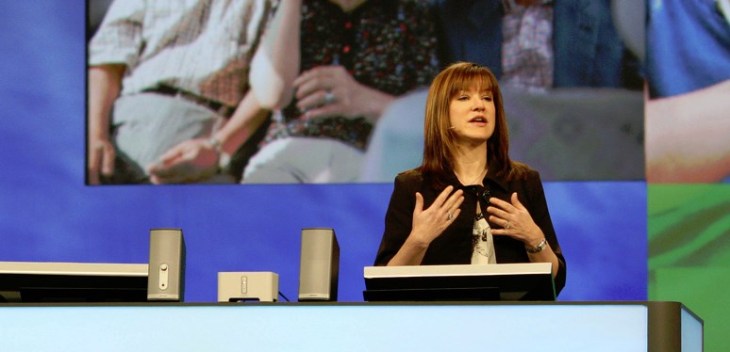A recent CITEworld article written by Mary Branscombe includes a quote from a Microsoft leader that directly hints at future harmonization of the various strains of Windows across disparate device classes.
According to Branscombe, Microsoft executive vice president Julie Larson-Green said the following at a recent event [Insertion via CITEworld, formatting: TechCrunch]:
We do think there is a world where there is a more mobile operating system, that doesn’t have the risks to battery life or the risk to security [that Windows does] but it also comes with a cost of flexibility. […]
We have the phone OS, we have Windows RT, and we have full Windows. We are not going to have three.
I confirmed the above quote with Microsoft, who provided a very slightly different version of the second part: “We have the Windows Phone OS, we have Windows RT, and we have full Windows. We’re not going to have three.” You almost want to add an ‘all’ in between
I think that the simplest way to interpret Larson-Green’s first remark regarding battery life and risk is that if Windows is to be smoothed between Windows Phone and Windows 8, the vanilla Windows code will have to better at handling power sensitive situations, like mobile. Windows 8 is a partially mobile operating system, so the challenge isn’t insurmountable.
Moving on: “We are not going to have three.” If you wanted to be crass, you could guess that Windows RT is going the way of that one thing that isn’t around anymore. Branscombe doesn’t think so, and neither do I.
I reached out to Microsoft for comment on the quote, and was given the following statement: “We’ll continue to support a broad range of chip architectures, including ARM, so our partners can deliver a broad range of devices. We have nothing additional to share about the roadmap at this time.” Microsoft at least wants us to believe that it remains committed to ARM.
I do. In no small part because the company is investing so heavily in Windows RT as a mobile-centric operating system that can run in tablet circles. Look at the non-ARM tablet that Microsoft built, and you can see how it views Windows Regular as a mobile operating system. It doesn’t.
Windows Phone runs on ARM-based chips. Could we see harmonization between Windows RT and Windows Phone? That feels wrong, given the inherent user interface difference. But if Microsoft could blend the two (perhaps in a way that is exceptionally dichotomized on different screen sizes, which is what we currently see, etc), we could have a single ARM Windows build, and an x86 edition. The oddity would be user interface sameness between the ARM build and x86 build some of the time (tablets!) and not others (smartphones!).
I think what we have known for some time is that Windows is not the past of Microsoft, but instead the core code bit that Azure-power services will flow through. And given the aggressive introduction of Windows (via WinRT and so forth) to hardware classes where it wasn’t before I think demands general homogeneity in ever increasing levels. That’s something that you could accomplish by limiting the number of permutations that Windows takes.
You know, from three to two.
Top Image Credit: Flickr
